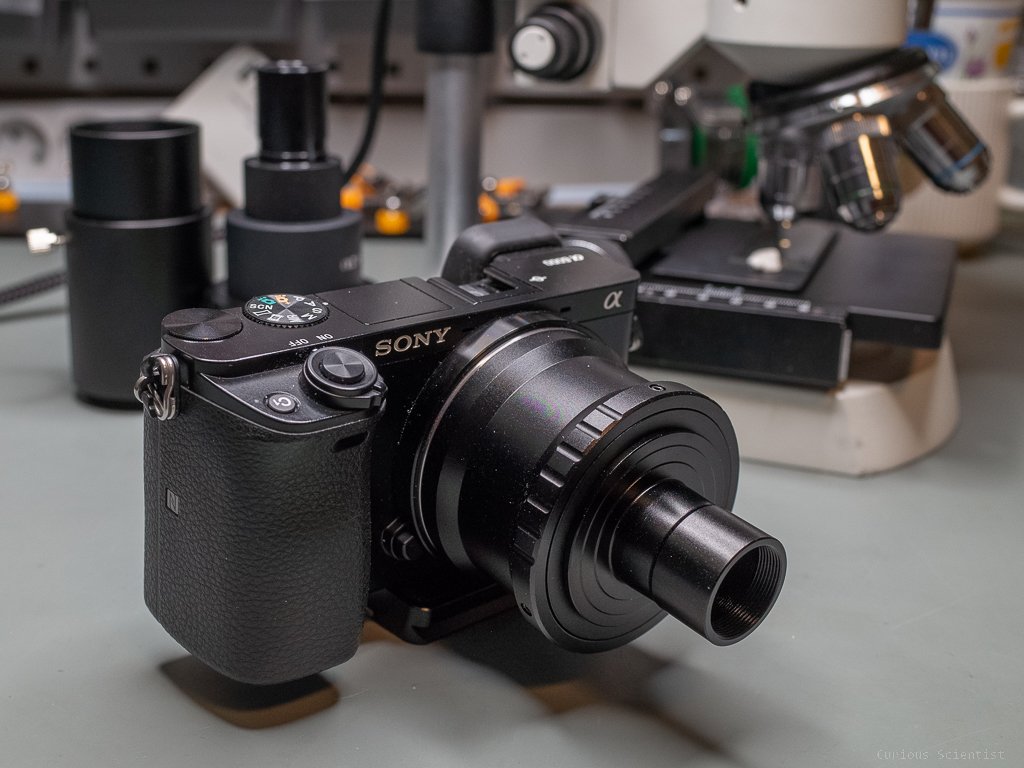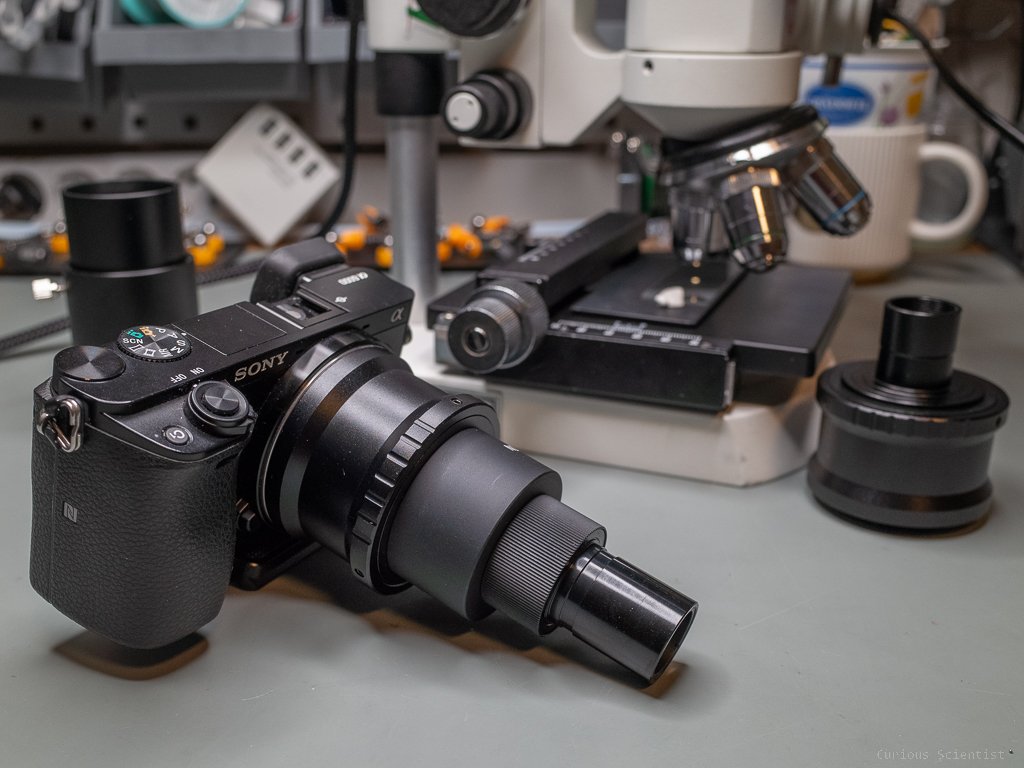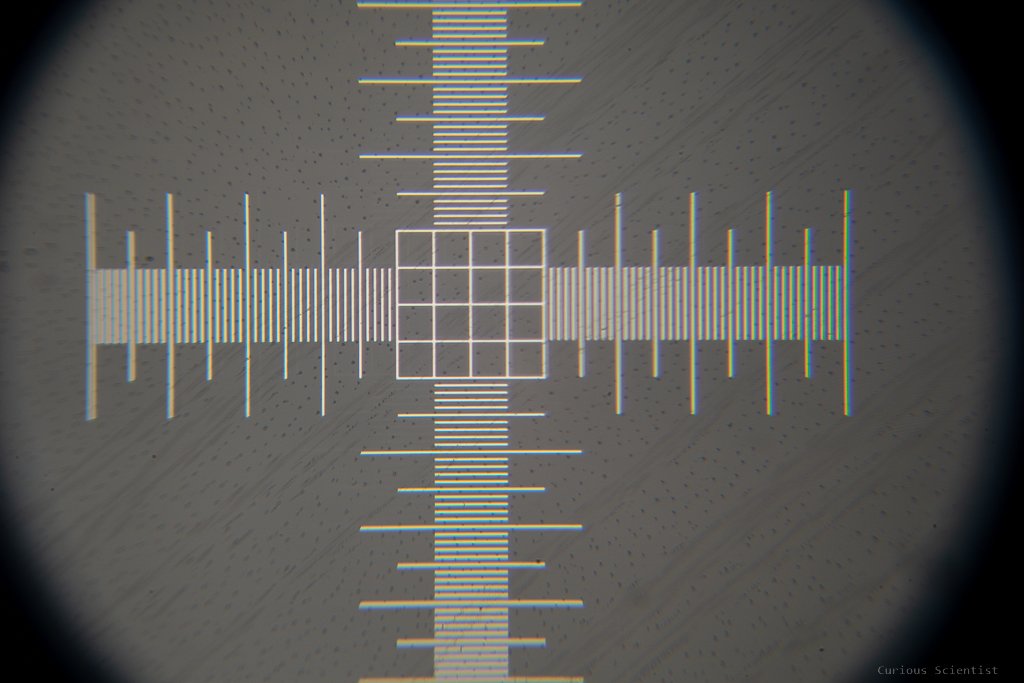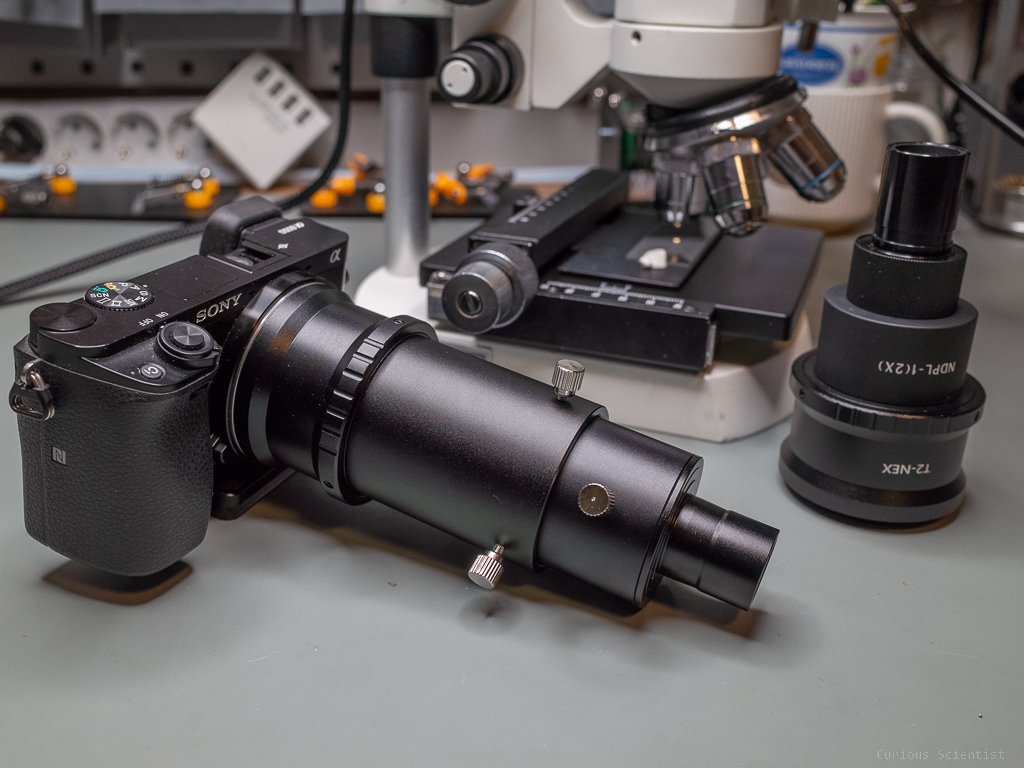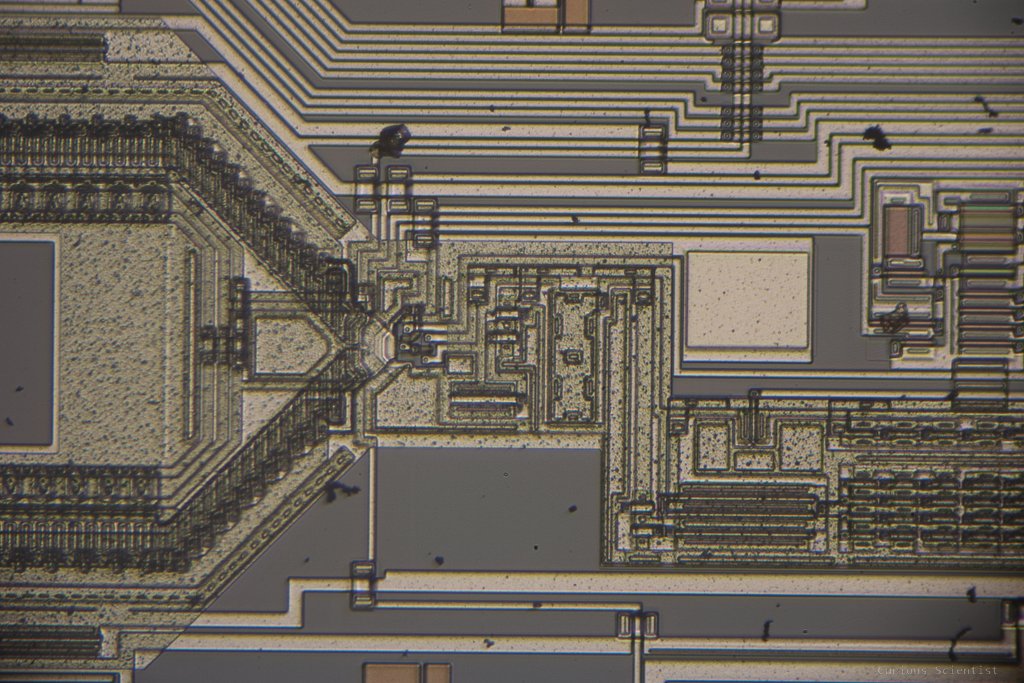Camera adapters for my metallurgical microscope
In this video, I show you which camera adapter fits the best with my Radical 2000x metallurgical microscope. When I bought this microscope, I picked a very simple T2-NEX adapter which turned out to be wrong, because the image suffers from heavy vignetting. Then, I purchased a rather expensive adapter, called “NDPL-1(2X)” with a built-in aperture and lenses, but it did not work either. In fact, it produces a distorted image with a heavy chromatic aberration, and guess what, vignetting. Then, the third option was just a simple extension tube (“Eyepiece projection adapter”). This adapter significantly increased the distance between the microscope lens and the sensor of the camera which resulted in a cropped, but vignetting and optical aberration-free image.
Extras
Below, there is a gallery with some sample images. I took a picture of a calibration scale (0.01 mm/div) and also of a TCD1201 linear CCD as examples.
The simple T2-NEX adapter produces a very strong vignetting. This can be easily cropped in photo editing software. With today’s cameras with 20-30 Megapixels, it is not really an issue. However, it is still an issue to some extent because we waste quite some area of the sensor. So even though the cropping could get rid of the vignetting, we threw away some useful areas of the camera’s sensor.
The NDPL-1(2X) adapter produces basically the same vignetting, and it also introduces optical flaws, such as geometrical distortions and chromatic aberration. The image of the TCD1201 “nicely” illustrates the problem.
Then, the final solution is a longer tube, a so-called “eyepiece projection adapter”. This tube increases the distance between the microscope lens and the camera’s sensor. By doing so, the field of view of the projected image decreased hence the image appearing on the sensor is cropped and there are no dark corners due to the vignetting. Since the sensor is placed further away from the lens, the magnification is increased, as compared to the magnification produced by the other two adapters. This is nicely shown in the images taken of the calibration slides. While the pictures showing the first two slides are roughly 1.3 mm wide, the picture taken with the long adapter is about 1 mm wide. So, there is a noticeable decrease in the field of view. Another thing is the loss of light. Changing between the short T2-NEX adapter and the long eyepiece projection adapter produces a noticeable light loss. When I photographed the calibration slide with the short adapter, the shutter speed was at 1/40 s. When I changed to the longer adapter, the speed decreased to 1/25 s. This is still manageable, and I set the ISO to 100 so I had a lot of wiggle room to adjust the exposure settings.
